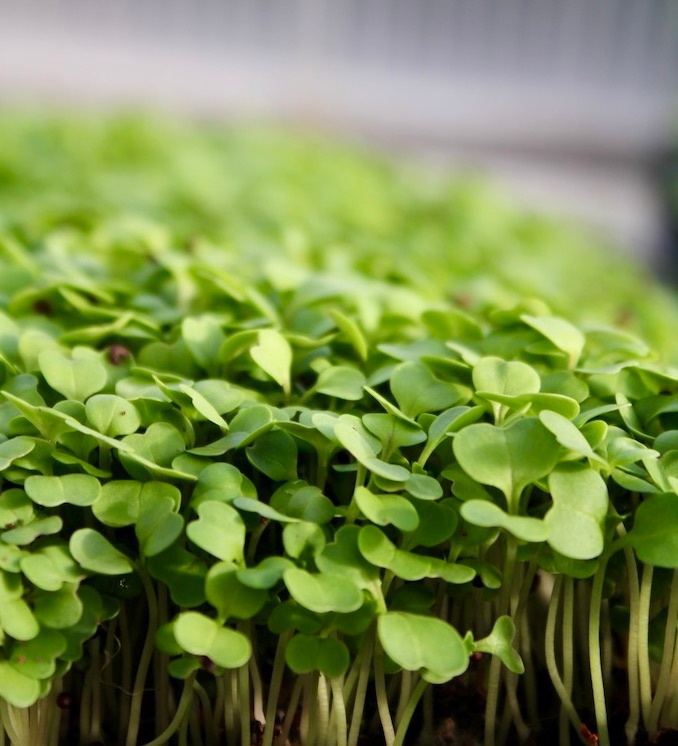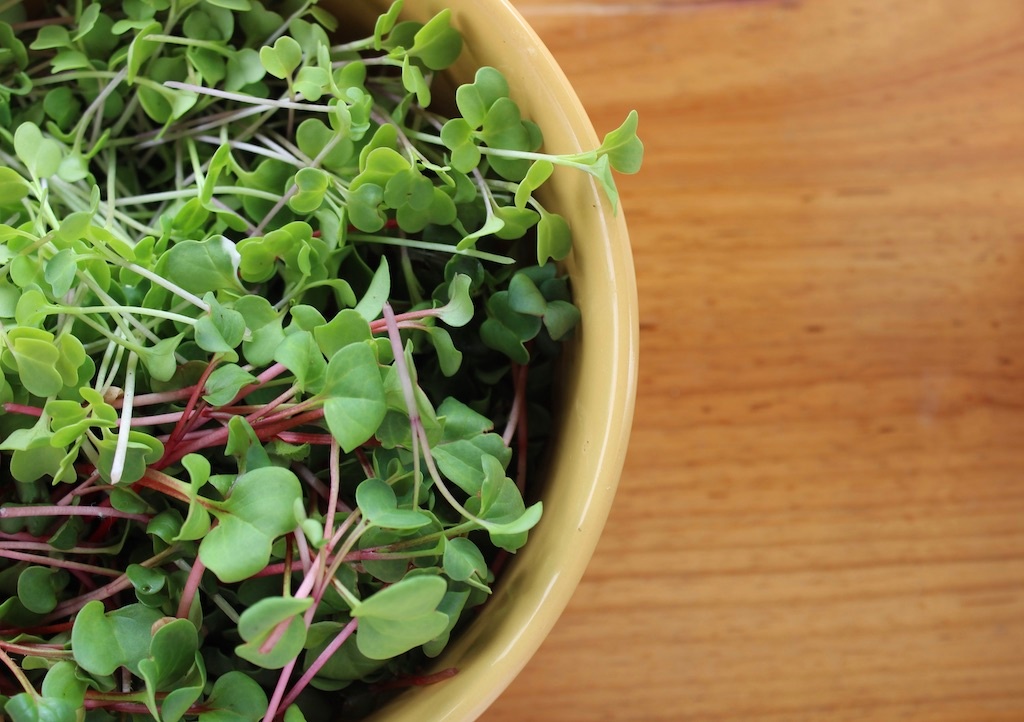WHAT ARE MICROGREENS?
Microgreens are young vegetable greens that are harvested just after the cotyledon leaves (the first leaves that appear during germination) have developed. These miniature greens are more mature than sprouts but younger than baby greens, making them a unique and nutrient-dense addition to various dishes.
NUTRITIONAL POWERHOUSES
Despite their small size, Microgreens boast an impressive nutritional profile.
Research has shown that Microgreens can contain higher levels of vitamins and minerals compared to their mature counterparts. For instance, studies have indicated that certain Microgreens like broccoli and radish can contain up to 40 times more nutrients than their fully grown counterparts.
THESE ARE JUST SOME OF THE BENEFITS OF EATING MICROGREENS:
Rich in Nutrients:
Despite their small size, Microgreens are packed with essential vitamins and minerals. Research indicates that these young greens can contain higher concentrations of nutrients compared to their mature counterparts, making them a nutrient-dense choice for enhancing your overall well-being.
Antioxidant Boost:
Microgreens are known for their high antioxidant content. Antioxidants help combat oxidative stress in the body, reducing the risk of chronic diseases and supporting cellular health.
Supports Heart Health:
Certain varieties of Microgreens, such as broccoli and radish, contain compounds that may contribute to heart health. These greens can help lower cholesterol levels and promote cardiovascular well-being.
Enhances Digestive Health:
Microgreens are a good source of fiber, which is essential for a healthy digestive system. Including fiber in your diet can aid in digestion, prevent constipation, and support a balanced gut microbiome.
Weight Management:
With their high nutrient content and low-calorie profile, Microgreens are an excellent choice for those looking to manage their weight. They provide essential vitamins and minerals without contributing to excessive calorie intake.
VARIETIES OF MICROGREENS
One of the exciting aspects of Microgreens is the wide variety available. From arugula and kale to sunflower and beet Microgreens, the options are diverse and cater to different taste preferences. Each type of Microgreen carries its own unique set of flavors, textures, and nutritional benefits.
GROWING MICROGREENS AT HOME
The beauty of Microgreens lies not only in their nutritional content but also in the ease with which they can be grown. With microgreens, people can produce fresh and nutritious vegetables even in areas that are considered food deserts.
Whether you have a spacious garden or a tiny balcony, cultivating Microgreens is a versatile and accessible option for your home
Select Your Seeds:
Choose high-quality seeds for the Microgreens you want to grow. Popular choices include broccoli, kale, radish, and sunflower seeds.
Prepare the Growing Medium:
Use a soilless growing medium or a potting mix to provide the best conditions for your Microgreens to thrive.
Planting Seeds:
Sprinkle the seeds evenly over the growing medium, press them down gently, and cover with a thin layer of soil.
Watering:
Keep the growing medium consistently moist, but avoid overwatering to prevent mold growth.
Provide Adequate Light:
Place your Microgreens in a location with plenty of natural light or use a grow light to ensure they receive the energy needed for optimal growth.
Harvesting: Once the Microgreens have developed their first true leaves, usually within 1-3 weeks, they are ready to be harvested. Use scissors to cut them just above the soil level.
INCORPORATING MICROGREENS INTO YOUR DIET
Now that you have a thriving Microgreens garden, it's time to enjoy the fruits (or rather, greens) of your labor. Here are some creative ways to incorporate Microgreens into your daily diet:
Salads: Sprinkle a handful of Microgreens on top of your favorite salads for an extra burst of flavor and nutrition.
Sandwiches and Wraps: Upgrade your sandwiches and wraps by adding a layer of Microgreens for a fresh and crunchy element.
Smoothies: Blend Microgreens into your morning smoothies for an easy and nutritious boost.
Garnish: Use Microgreens as a vibrant garnish for soups, omelets, or any other dishes that could use a pop of color and freshness.
HARVESTING HEALTH WITH MICROGREENS
Microgreens represent a nutritional powerhouse that can easily be incorporated into your daily meals. Whether you choose to grow them at home or purchase them from local markets, the benefits of these tiny greens are undeniable. Elevate your culinary experience and support your health by exploring the diverse world of Microgreens today.
MICROGREENS WORKSHOP
At Raiz we offer experiences, among which we have a Microgreen Sowing workshop, in which you will get to sow and taste some of the varieties we grow. Contact us to info@raiz.farm for more information.


